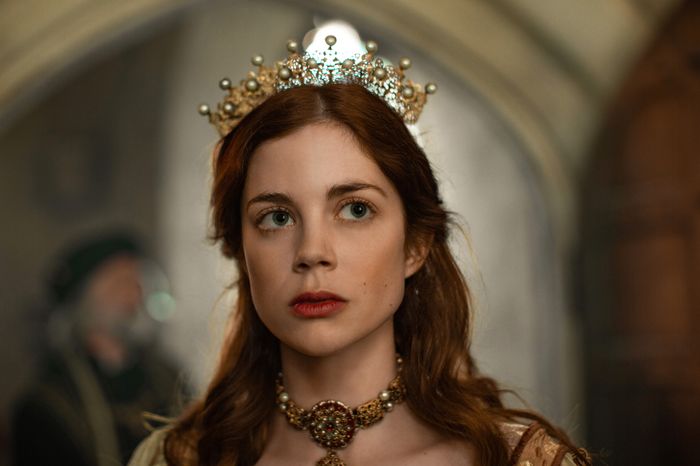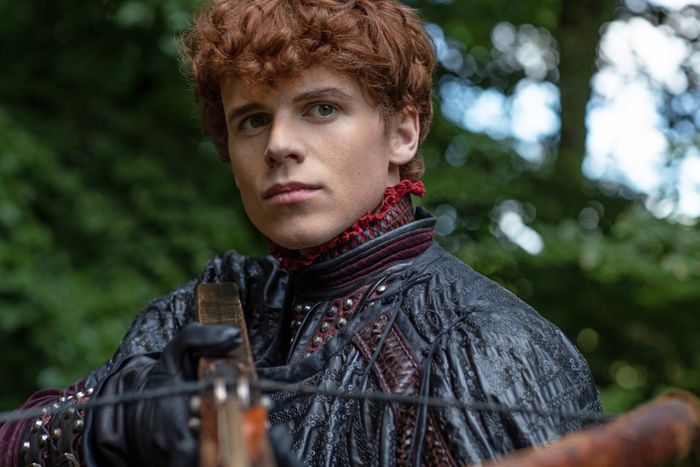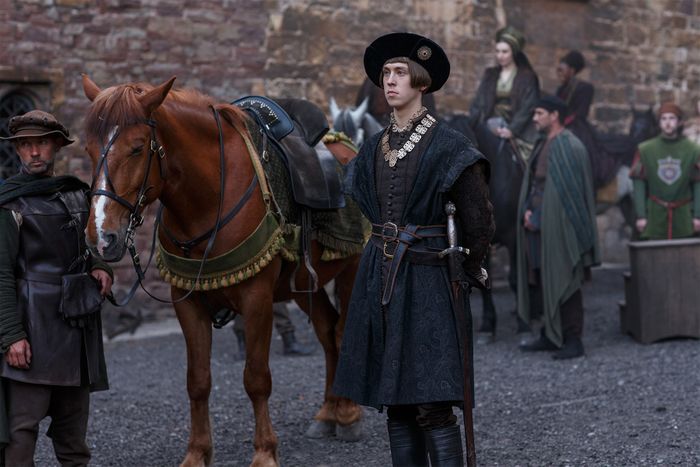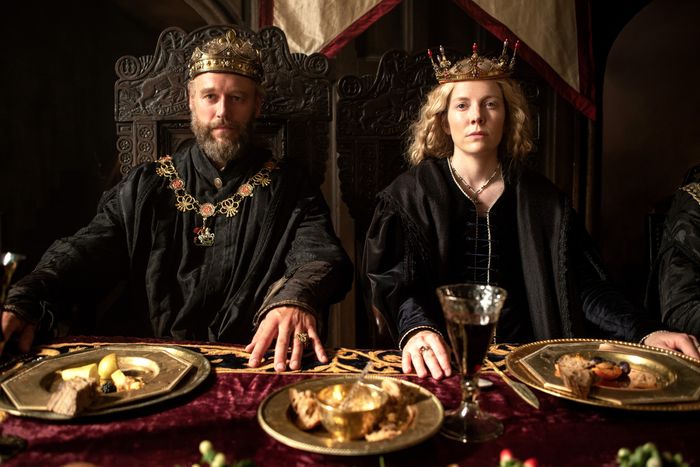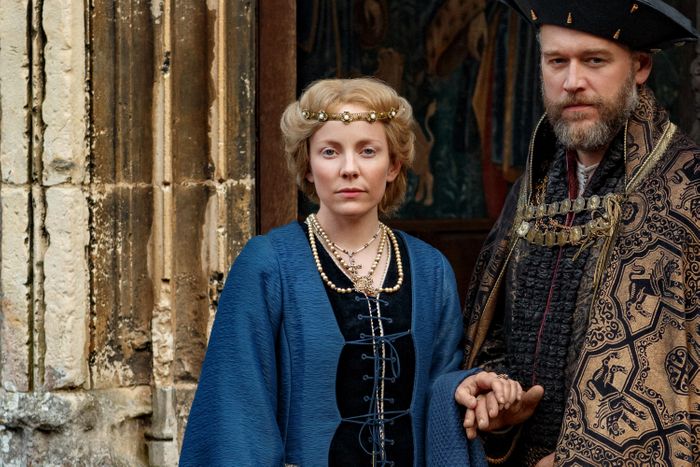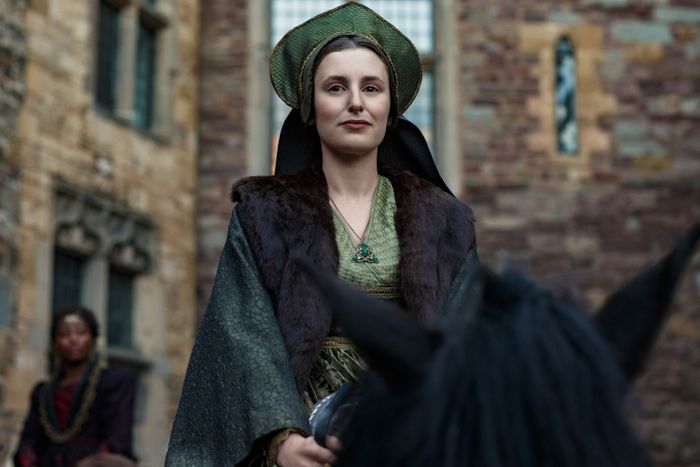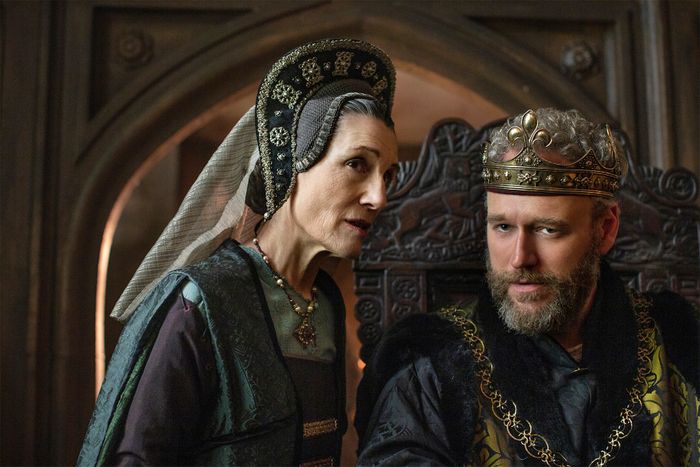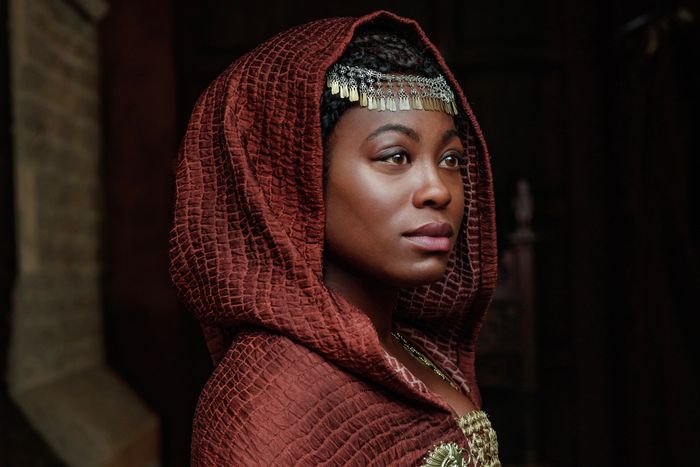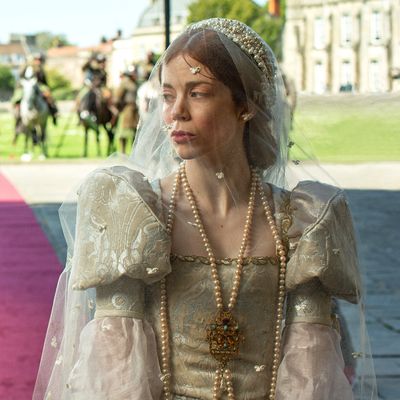
Starz’s historical romance The Spanish Princess takes a new vantage point on the perennially popular Tudor clan: that of Catherine of Aragon before her marriage to Henry VIII, known as Prince Harry in the series. (For timeline comparison, Showtime’s The Tudors begins about 20 years into that marriage.) Based on two novels by Philippa Gregory, this 16th-century drama depicts Princess Catherine from her arrival in England to her subsequent marriage to two English princes.
Gregory is (in)famous for forgoing a certain amount of historical truth in favor of situations that focus on characters’ pouting lips, straining groins, and what can be done with each of them, so it’s understandable that a sexy premium-cable series like The Spanish Princess might favor her version of events over the historical record when it comes to certain characterizations and narrative. With that in mind, let’s examine just how much plot is encompassed within the show’s “Some historical events and characters have been altered” disclaimer.
The Main Facts
The real royals of the Tudor era were playing an enormous game of Bang, Marry, Kill, with Henry VIII choosing all three options multiple times. On the show, it can be hard to keep everyone straight as they succumb to these fates, so here’s the breakdown: The Spanish Princess starts soon after the final battle for the throne between Tudors and Plantagenets, culminating in the death of Richard III and the accession to the throne of Henry VII. The Tudors are Henry; his mother, Margaret Beaufort; his wife, Elizabeth of York (also a Plantagenet); and his children, Arthur, Harry, Margaret, and Mary. The Plantagenets still alive in The Spanish Princess are the aforementioned Elizabeth of York (Richard III’s niece), her cousin Margaret Pole, and her uncle Edward Stafford, Duke of Buckingham.
Catherine of Aragon
The show: The Spanish Princess’s Catherine is imperious, manipulative, and willing to lie to get what she wants (namely, to stay in England and marry Prince Harry after the death of her first husband). She decides to accomplish this after Arthur’s passing by saying she’s a virgin (a definite lie in this series), so there is no impediment to marrying Harry. This impediment predominantly arose from the Old Testament injunction to not marry your brother’s widow.
The historical record: While we will never know for sure if Catherine of Aragon did not have sex with her first husband, contemporary accounts remark on her piety and devotion. This, coupled with her heart-wrenching speech to Henry more than 20 years into their marriage in which she said, “When ye had me at first, I take God to my judge, I was a true maid, without touch of man,” as well as Spanish accounts of her first marriage, incline one to believe Catherine. Queens of England used to adopt mottos, and Catherine’s chosen words were “Humble and Loyal.” Interpret that as you will. One of the real tragedies here is that her sexual past mattered at all, but so goes 16th-century Europe (and also most of history).
Harry, Duke of York
The show: The future Henry VIII is a leering teenager who does the 16th-century equivalent of sexting his sister-in-law, cavorting with his idiot friends, and generally making a nuisance of himself while his grandmother looks on indulgently. This would seem like typical grandmother behavior, but it’s not when your grandmother is Margaret Beaufort. Harry sobers up when his brother dies and begins to look regal enough to become a credible monarch.
The historical record: The series ages up Harry, although the Gregory books correctly place him at 10 years old when he first met Catherine. Given that the first three episodes see Catherine meet, marry, and mourn Arthur, this age alteration seems inevitable. We have no evidence that Harry wrote Catherine prior to his brother’s marriage, nor do we have any letters from Catherine to Arthur proclaiming she wants to kiss his neck.
The young Harry was athletic, intelligent, and fun. The Venetian ambassador to his court in 1515 described him as “the handsomest potentate I ever set eyes on; above the usual height, with an extremely fine calf to his leg.” (The Renaissance was very interested in gentlemen’s calves.) While a 10-year-old lusting after his sister-in-law is a disturbing thought, the rest of Harry’s characterization in the early episodes of the season seems on track.
Prince Arthur
The show: Arthur and Catherine’s five-month marriage, while off to a rough start, quickly becomes a starry-eyed romance, with plans to build a Tudor England utopia. (They call it Camelot, the nerds.) Arthur is bookish and shy, but determined to be a good king. He writes Catherine poems, forgives her for the death of his friend (it’s a long story), and envies his brother’s talents.
The historical record: Arthur was in fact named for King Arthur of the famed Camelot. Since Henry VII’s claim to the throne was tenuous, he shored it up by not only marrying a Plantagenet but also tracing his family’s line back to early British kings. Henry insisted Arthur be born in Winchester, believed at the time to be the site of Camelot. The young prince was the great hope of a country weary from war.
While Arthur is popularly thought of as sickly, there is little to no historical record of this. There is also no record of his wanting to completely overhaul England’s system of governance and representation, but it’s a nice thought on the part of the show. He memorized sections from the classics, danced well, and was an excellent archer. The “malign vapour” that made him and Catherine ill was his first and last major sickness. He died at age 15.
King Henry VII
The show: This version of Henry appears in the casting vein of Richard the Lionhearted, imbued with the hale-and-heartiness that all good dramatized kings typically have. He’s interested in his family and protecting his kingdom and deeply in love with his wife — though not above staring at Catherine in an uncomfortable way.
The historical record: The real Henry VII was described by a contemporary like this: “His eyes were small and blue, his teeth few, poor and blackish; His hair thin and white, his complexion sallow.” His reputation for miserliness was unparalleled in England. While on the show his wife’s disturbing prophecy is presented as the catalyst for his preventing Catherine’s marriage to Harry for some years, in real life he just wanted more money.
Elizabeth of York
The show: Henry VII’s wife, Elizabeth of York, loves her family fiercely and leans on suspicion and paranoia to root out their enemies. It seems appropriate, then, that her final moments in the third episode are spent whispering to Henry about a dramatic prophecy that if Catherine marries Prince Harry, the Tudor line will end.
The historical record: This is, quite frankly, complete bunk. It puts the blame for Catherine’s unfortunate fate on her own ambition instead of on Henry VIII and his inability to hear the word “no.” Rather than basing Elizabeth’s death on reality or even on Gregory’s novels, the show leaps off into its own world of doom-laden prophecies. In Gregory’s novel, Elizabeth dies an ignominious death offscreen and life moves on. In reality, Elizabeth’s death (owing to a postpartum infection following the birth of a short-lived child) caused intense misery in the royal household. A contemporary account is that Henry VII went “to a solitary place … and would no man should resort unto him” and the last few years of his reign were marked by increasing illness and paranoia.
Margaret Pole
The show: In The Spanish Princess, Margaret Pole seems to hide in corners and scuttle along the corridors, hoping not to be seen. Her prime characteristic is a profound dislike of Catherine, whose arrival in England was the cause of Margaret’s brother being executed by the Tudors. She is close with Arthur and immensely saddened by his death but refuses to side with Catherine because she knows how to practice self-preservation where the Tudors are concerned.
The historical record: In the Gregory books, Margaret and Catherine become fast friends and Margaret immediately tells Catherine she doesn’t blame her for her brother’s death, which some suspected was ordered by Spain prior to sending Catherine to England. The real Margaret lasted under Tudor rule until 1541 (about 40 years beyond the beginning of the series), whereupon she was executed on the order of Henry VIII. That dude could not get enough of executing ladies.
Margaret Beaufort
The show: The inimitable Harriet Walter plays Margaret Beaufort, mother to Henry VII and power broker of royal marriages. Beaufort is not a woman to be trifled with. She is the last word on decisions affecting the Tudor family, and she looks with scorn and derision on this princess from Spain who has failed to produce an heir.
The historical record: The real life of Margaret Beaufort seems Game of Thrones–level terrifying. She was married at age 12 to Edmund Tudor, who died soon after, when she was seven months pregnant and 13 years old. This, her only child, would be Henry Tudor. Margaret then plotted under Richard III with Elizabeth Woodville, the subject of Starz’s The White Queen, to bring about a rebellion against him. Around the time The Spanish Princess takes place, she was given the right to administer justice in the north of England and remained in control of the royal household.
Lina
The show: Lina is one of Catherine’s ladies-in-waiting. She accompanies her from Spain and strikes up a romance with a Moorish soldier named Oviedo, despite the fact that she has come to England (in part) so Catherine will find her and the other ladies-in-waiting titled husbands.
The historical record: Lina, or Catalina, was definitely a real person and part of Catherine’s retinue, arriving in England with her in 1501. In reality, however, she was an enslaved servant and “royal bedmaker,” although she seems to have been released sometime before 1527, as she was by then back in Spain and married to, yes, a man named Oviedo. We don’t know if he was a soldier, but he definitely made crossbows, so close enough.


